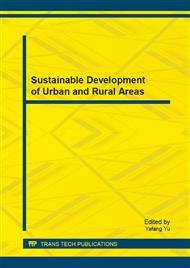[1]
Fujita, Yoshiko, Wang-Hsien Ding, and Martin Reinhard. Water Environment Research 68. 5 (1996): 867-876.
Google Scholar
[2]
Zhang, Weidong, and Francis A. DiGiano. Water Research 36. 6 (2002): 1469-1482.
Google Scholar
[3]
van der Kooij, Dirk. Journal-American Water Works Association 84. 2 (1992): 57-65.
Google Scholar
[4]
LeChevallier, Mark W., William Schulz, and Ramon G. Lee. Applied and Environmental Microbiology 57. 3 (1991): 857-862.
Google Scholar
[5]
LeChevallier, Mark W., Nancy J. Welch, and Darrell B. Smith. Applied and Environmental Microbiology 62. 7 (1996): 2201-2211.
Google Scholar
[6]
Office of Water (4601M) and Office of Ground Water and Drinking Water. U.S. Environmental Protection Agency. January (2007).
Google Scholar
[7]
Gagnon, G. A., P. J. Ollos, and P. M. Huck. Aqua 46. 3 (1997): 165-180.
Google Scholar
[8]
Ainsworth, Richard G., ed. Safe Piped Water: Managing Microbial Water Quality in Piped Distributions Systems. IWA Publishing, (2004).
DOI: 10.2166/9781780405841
Google Scholar
[9]
Servais, Pierre, Patrick Laurent, and G. Randon. Journal of water supply: research and technology. AQUA 44. 1 (1995): 10-17.
Google Scholar
[10]
Laurent, Patrick, et al. Journal-American Water Works Association 89. 7 (1997): 92-103.
Google Scholar
[11]
Dukan, Sam, et al. Water Research 30. 9 (1996): 1991-(2002).
Google Scholar
[12]
Jjemba, P. K., et al. Guidance document on the microbiological quality and biostability of reclaimed water following storage and distribution., (2009).
Google Scholar
[13]
Ryu, H., Alum, A., Abbaszadegan, M., 2005. Environmental Science and Technology 39 (22), 8600~8605.
Google Scholar
[14]
Khan, E., R.W. Babcock Jr., S. Viriyavejakul, I.H. Suffet, and M.K. Stenstrom. 1998. Water Environ. Res., 70(5): 1033~1040.
Google Scholar
[15]
Ernst, M., and M. Jekel. 1999. Water Sci. Technol., 40(4–5): 277~284.
Google Scholar
[16]
Fujita, Y., W.H. Ding, and M. Reinhard. 1996. Water Environ. Res., 68(5): 867~876.
Google Scholar
[17]
Qiang Xu, et al. China Water & Wastewater 19. 7 (2003): 97-99.
Google Scholar
[18]
Deqiang Chen, et al. China Water & Wastewater 24. 260 (2009): 64-68.
Google Scholar
[19]
Liqiang Zhang. Journal of Adult Education School of Hebei University of Technology 2 (2009): 011.
Google Scholar
[20]
Günder, Berthold, and Karlheinz Krauth. Water science and technology 40. 4 (1999): 311-320.
Google Scholar
[21]
Cicek, Nazim, et al. Journal of the American Water Works Association 90. 11 (1998).
Google Scholar
[22]
Tong Liu, Xianbo Sun, and Yongdi Liu. Environmental Chemistry 28. 3 (2009): 369-372.
Google Scholar
[23]
Aihua He. MS thesis. Qingdao Technological University, (2010).
Google Scholar


